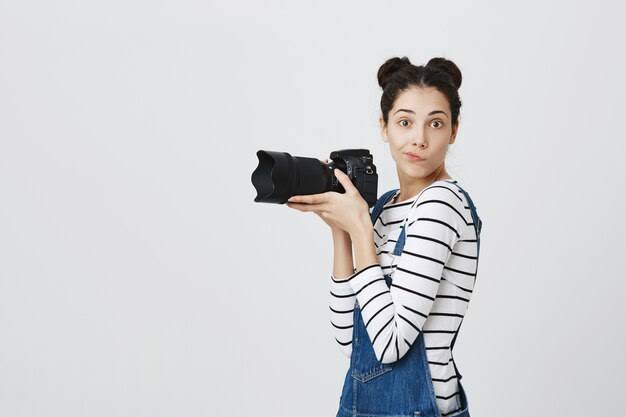As we gaze into the future of fashion, we find ourselves on the brink of an exhilarating era marked by boundless innovation, shifting cultural paradigms, and profound environmental awareness. The fashion industry is set to undergo transformative changes, driven by advances in technology, evolving social norms, and a growing emphasis on sustainability. Let’s embark on a journey to envision what fashion might look like in the coming decades.
1. Technological Marvels: Smart Fabrics and Beyond
Imagine stepping into a wardrobe where every garment is a marvel of technological innovation. The future of fashion is likely to be dominated by smart fabrics and interactive clothing. These textiles will feature embedded sensors that can adjust temperature, monitor health metrics, and even change color or pattern based on mood or environment.
Designers like Iris van Herpen are already pioneering the intersection of technology and fashion. Her designs often incorporate 3D printing and futuristic materials, providing a glimpse into a world where fashion and technology seamlessly intertwine. As van Herpen herself puts it, “Fashion is an art, but it’s also a science. The future is about merging these disciplines to create something truly extraordinary.”
2. Sustainable and Ethical Fashion
The urgent need for sustainability is reshaping the fashion landscape. In the coming decades, eco-friendly materials and ethical production practices will likely become the norm rather than the exception. Fashion houses will increasingly use recycled and biodegradable materials, and innovative processes will minimize waste and carbon footprints.
Stella McCartney, a trailblazer in sustainable fashion, encapsulates this vision: “The future of fashion must be sustainable, and we all have to make it happen. The industry is on a journey to find solutions that are kind to the planet.”
Expect to see a rise in circular fashion, where garments are designed to be recycled or repurposed, and a surge in transparency.With brands providing detailed information about their supply chains and environmental impact.
3. Personalized and Customizable Fashion
Personalization will become a central theme in fashion’s future. Advances in AI and machine learning will allow consumers to design and customize their clothing. To match their exact preferences and body measurements. Imagine a virtual fitting room where you can try on different styles and colors in real-time. A clothing subscription service that curates outfits based on your personal style and social calendar.
Kim Kardashian, known for her influence on contemporary fashion, has hinted at this trend with her ventures into personalized style and tech-driven fashion solutions. As she notes, “Personalization is the next frontier in fashion. It’s about making every individual feel seen and celebrated through what they wear.”
4. The Evolution of Gender Fluidity
The future of fashion will continue to embrace and expand upon the concept of gender fluidity. Designers will create collections that defy traditional gender norms, offering a wider range of options for individuals to express themselves freely. Fashion shows will feature diverse models and inclusive designs that celebrate all forms of identity.
Designer Jonathan Anderson, known for his gender-bending creations, reflects this shift: “Fashion should be a space where gender is not confined to binary notions. The future is about embracing a spectrum of identities and letting people wear what truly resonates with them.”
5. Virtual and Augmented Reality
The rise of virtual and augmented reality will revolutionize how we experience fashion. Virtual fashion shows, immersive shopping experiences, and digital wardrobes will become commonplace. Consumers will be able to attend fashion events from the comfort of their homes and interact with virtual clothing in a way that feels almost tangible.
In the words of actor and fashion icon Zendaya, “Virtual reality is going to change everything. Imagine being able to walk through a fashion show in your living room or try on clothes without ever leaving your house. The possibilities are endless.”
6. Global and Cultural Fusion
Fashion will increasingly reflect a globalized world where cultural fusion becomes a cornerstone. Designers from diverse backgrounds will blend traditional craftsmanship with modern aesthetics, creating garments that celebrate multicultural influences. This cross-pollination will lead to a richer, more inclusive fashion narrative that honors the world’s diverse heritage.
As global fashion influencer Chiara Ferragni suggests,
“The future of fashion is about celebrating cultural diversity and bringing together influences from all corners of the globe. It’s about creating something that is both global and deeply personal.”
A Brave New Fashion World
The future of fashion promises to be as dynamic and multifaceted as the world we live in. With technological advancements, a commitment to sustainability, and a celebration of diversity and individuality. Fashion will evolve into a realm of limitless possibilities. As we look ahead. The words of fashion visionary Karl Lagerfeld resonate: “FashionLook is a way to say who you are without having to speak.” The next decades will undoubtedly amplify this sentiment, allowing us to express ourselves in ever more innovative and meaningful ways.


